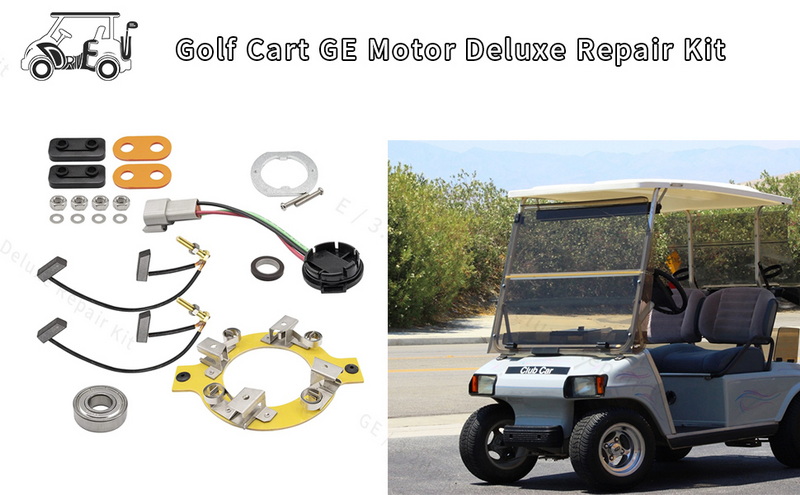Content Menu
● Understanding Your Electric Golf Cart
● Common Electric Golf Cart Issues
>> Battery Problems
>>> Dead or Weak Batteries
>>> Corroded Battery Terminals
>> Motor Issues
>>> Motor Not Running
>>> Noisy Motor
>> Controller Problems
>>> Intermittent Power Loss
>> Solenoid Issues
>>> Cart Won't Move
>> Charger Problems
>>> Batteries Not Charging
● Advanced Repairs
>> Rebuilding the Motor
>> Replacing the Controller
>> Upgrading Your Golf Cart
● Preventive Maintenance
● When to Seek Professional Help
● Conclusion
● FAQ
>> 1. How often should I charge my golf cart batteries?
>> 2. What type of water should I use to fill golf cart batteries?
>> 3. How long do electric golf cart batteries typically last?
>> 4. Can I upgrade my golf cart's speed?
>> 5. How often should I perform maintenance on my electric golf cart?
Electric golf carts are popular vehicles for both golfing and general transportation in various settings. However, like any mechanical device, they can experience issues over time. This comprehensive guide will walk you through the process of diagnosing and repairing common electric golf cart problems, helping you keep your cart running smoothly.

Understanding Your Electric Golf Cart
Before diving into repairs, it's essential to understand the basic components of an electric golf cart:
1. Batteries
2. Motor
3. Controller
4. Solenoid
5. Charger
6. Wiring
Each of these components plays a crucial role in the operation of your golf cart, and issues with any of them can lead to performance problems.
Common Electric Golf Cart Issues
Battery Problems
The most frequent issues with electric golf carts are related to the batteries. Here are some common battery-related problems and their solutions:
Dead or Weak Batteries
If your golf cart won't start or loses power quickly, the batteries may be dead or weak.
Solution:
1. Check the water levels in the batteries and add distilled water if necessary.
2. Clean the battery terminals to remove any corrosion.
3. Charge the batteries fully.
4. If the problem persists, you may need to replace the batteries.
Corroded Battery Terminals
Corrosion on battery terminals can prevent proper electrical flow.
Solution:
1. Disconnect the batteries.
2. Clean the terminals with a mixture of baking soda and water.
3. Rinse with clean water and dry thoroughly.
4. Apply a thin layer of petroleum jelly to prevent future corrosion.
Motor Issues
Motor problems can cause your golf cart to run poorly or not at all.
Motor Not Running
If the motor doesn't run when you press the accelerator, try these steps:
Solution:
1. Check the batteries and connections.
2. Inspect the motor brushes for wear and replace if necessary.
3. Test the solenoid and replace if faulty.
4. If these steps don't work, the motor may need to be rebuilt or replaced.
Noisy Motor
Unusual noises from the motor can indicate various issues.
Solution:
1. Check for loose connections or debris in the motor.
2. Inspect the bearings and replace if worn.
3. If the noise persists, consult a professional for a thorough inspection.
Controller Problems
The controller regulates power from the batteries to the motor. Issues with the controller can cause erratic behavior in your golf cart.
Intermittent Power Loss
If your cart loses power sporadically, the controller may be at fault.
Solution:
1. Check all wiring connections to the controller.
2. Test the controller with a multimeter.
3. If faulty, replace the controller.
Solenoid Issues
The solenoid acts as a switch between the batteries and the motor. A faulty solenoid can prevent your cart from running.
Cart Won't Move
If your cart doesn't move when you press the accelerator, the solenoid may be the culprit.
Solution:
1. Listen for a clicking sound when turning the key. If there's no click, the solenoid may be faulty.
2. Test the solenoid with a multimeter.
3. Replace the solenoid if it's not functioning correctly.
Charger Problems
A malfunctioning charger can lead to battery issues and poor cart performance.
Batteries Not Charging
If your batteries aren't charging properly, check the charger.
Solution:
1. Inspect the charger cord and plug for damage.
2. Check the charger's output voltage with a multimeter.
3. If the charger is faulty, replace it with a compatible model.
Advanced Repairs
For more complex issues, you may need to perform more advanced repairs. Always consult your golf cart's manual and consider professional help if you're unsure.
Rebuilding the Motor
If your motor needs rebuilding, follow these general steps:
1. Remove the motor from the golf cart.
2. Disassemble the motor carefully, noting the position of all parts.
3. Clean all components thoroughly.
4. Replace worn brushes, bearings, and any damaged parts.
5. Reassemble the motor, ensuring all components are correctly aligned.
6. Reinstall the motor in the golf cart.
Replacing the Controller
When replacing the controller:
1. Disconnect the batteries.
2. Remove the old controller, carefully noting all wire connections.
3. Install the new controller, ensuring all wires are connected correctly.
4. Test the cart's operation before fully reassembling.
Upgrading Your Golf Cart
Consider these upgrades to improve your golf cart's performance:
1. Install higher capacity batteries for increased range.
2. Upgrade to a more powerful motor for better speed and hill-climbing ability.
3. Add a programmable controller for customized performance settings.
Preventive Maintenance
Regular maintenance can prevent many common issues:
1. Keep batteries clean and properly charged.
2. Check and tighten all connections regularly.
3. Inspect tires for wear and maintain proper inflation.
4. Lubricate moving parts as recommended by the manufacturer.
5. Store your golf cart in a dry, protected area when not in use.
When to Seek Professional Help
While many repairs can be done at home, some situations require professional assistance:
1. Complex electrical issues
2. Major motor or controller failures
3. Structural damage to the cart
4. When you lack the necessary tools or expertise
Remember, safety should always be your top priority when working on your golf cart.
Conclusion
Repairing an electric golf cart can be a rewarding experience that saves you money and extends the life of your vehicle. By understanding the common issues and their solutions, you can keep your golf cart running smoothly for years to come. Regular maintenance and prompt attention to problems will ensure that your cart remains a reliable and enjoyable means of transportation.

FAQ
1. How often should I charge my golf cart batteries?
It's best to charge your golf cart batteries after each use, even if you've only used the cart for a short time. This helps maintain battery life and ensures your cart is always ready for use.
2. What type of water should I use to fill golf cart batteries?
Always use distilled water to fill golf cart batteries. Tap water contains minerals that can damage the batteries over time.
3. How long do electric golf cart batteries typically last?
With proper maintenance, golf cart batteries can last 4-6 years. However, this can vary depending on usage patterns and maintenance practices.
4. Can I upgrade my golf cart's speed?
Yes, you can increase your golf cart's speed by upgrading the motor, controller, or both. However, be aware that this may affect the cart's warranty and could be subject to local regulations.
5. How often should I perform maintenance on my electric golf cart?
It's recommended to perform basic maintenance checks monthly, including battery water levels, tire pressure, and brake function. A more thorough inspection should be done annually or every 100-200 hours of use.









































